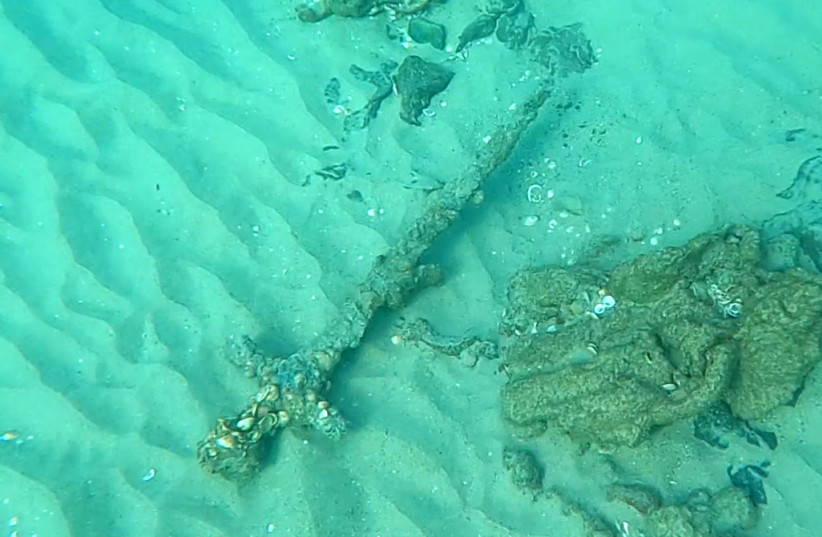 900-year-old Crusader sword found by scuba diver off Israel’s coast
900-year-old Crusader sword found by scuba diver off Israel’s coast
ROSSELLA TERCATIN
The 1-meter-long blade was spotted among other remains such as pottery and metal anchors in a site used as a natural anchorage as early as 4,000 years ago.

An impressive meter-long sword dating back to the Crusader period was found by a scuba diver on the seabed off the Carmel Cost, the Israel Antiquities Authority announced Monday.
The diver, Shlomi Katzin from Atlit, spotted several ancient remains such as pottery fragments and stone and metal anchors, as well as the blade, which probably resurfaced after the shifting of sands. Fearing that the artifact might get covered up again, he brought it to the surface and contacted the IAA.
“The sword, which has been preserved in perfect condition, is a beautiful and rare find and evidently belonged to a Crusader knight,” said IAA’s Robbery Prevention Unit Inspector Nir Distelfeld. “It was found encrusted with marine organisms but is apparently made of iron. It is exciting to encounter such a personal object, taking you 900 years back in time to a different era, with knights, armor and swords.”
Over the centuries, the waters by the Carmel Coast were sailed by thousands of boats.
“The Carmel coast contains many natural coves that provided shelter for ancient ships in a storm, and larger coves around which entire settlements and ancient port cities developed, such as Dor and Atlit,” IAA’s Marine Archaeology Unit Director Kobi Sharvit noted. “These conditions have attracted merchant ships down the ages, leaving behind rich archaeological finds. The recently recovered sword is just one such find.”

The specific site where the sword was found was already known by the IAA. Previous finds suggested that it was used as a natural anchorage as early as 4,000 years ago, during the Late Bronze Age.
Identifying archaeological remains on the seabed often presents challenges because of the ever-shifting conditions. For this reason, fortuitous discoveries can make a big difference.
“Underwater surveying is dynamic,” said Sharvit. “Even the smallest storm moves the sand and reveals areas on the sea bed, meanwhile burying others. It is therefore vitally important to report any such finds and we always try to document them in situ, in order to retrieve as much archaeological data as possible.”
Zawartość publikowanych artykułów i materiałów nie reprezentuje poglądów ani opinii Reunion’68,
ani też webmastera Blogu Reunion’68, chyba ze jest to wyraźnie zaznaczone.
Twoje uwagi, linki, własne artykuły lub wiadomości prześlij na adres:
webmaster@reunion68.com
